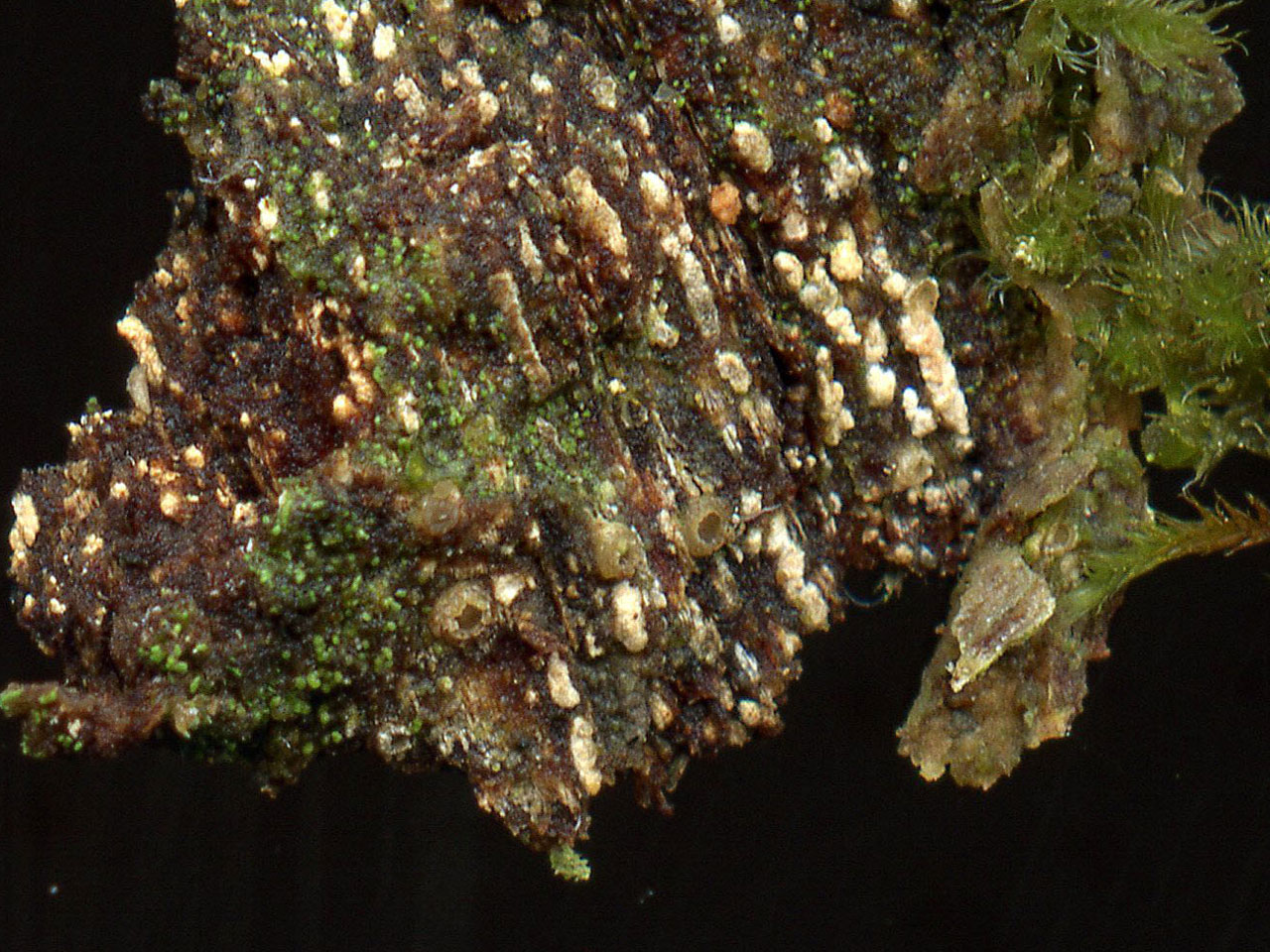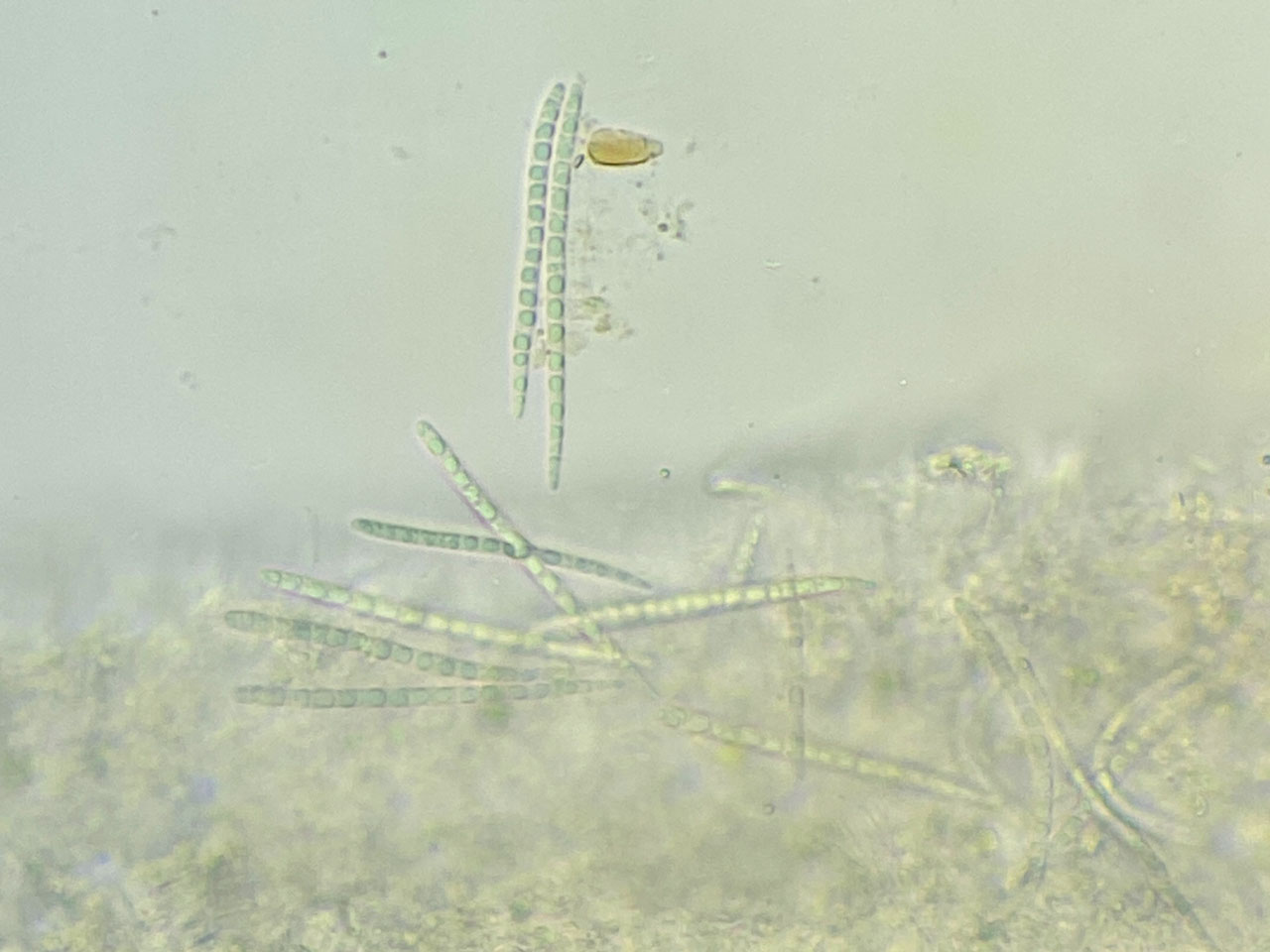A tiny, probably non-lichenised, fungus found as an ephemeral in bare patches on rather ‘spongy’ base-rich bark of old trees. Only easy to spot when wet and the brownish yellow erumpent ulcerate apothecia need to be deliberately searched for. The apothecia are similar to those of Karstenia dictyospora and Karstenia rhopaloides, but these have different spores, Karstenia dictyospora can also be found on veteran trees but Karstenia rhopaloides is found on more nutrient-enriched bark, wood and on plant debris.
Thallus inconspicuous, evanescent. Apothecia scattered or in small groups, 0.4–0.7 mm diam., pale to brownish yellow; the pore to 0.5 mm diam., sometimes with a notched margin; disc cupulate, pinkish to greyish-white; exciple yellow-brown; hymenium 90–120 µm tall. Asci cylindrical to cylindric-clavate, 70–90 × 10–14 µm, 8-spored. Ascospores (36–) 45–74 × (3–) 3.5–4 (–5) µm, cylindrical to narrowly fusiform, the apices rounded, 8- to 14-septate, with a distinct perispore.
Karstenia sorbina (P. Karst.) P. Karst. (1885), type of the genus, appears to be a synonym of K. chrysophaea, but is rarely rarely reported and the name would not have priority over K. chrysophaea. Karstenia rhopaloides is similar but has shorter, narrowly clavate ascospores.
Ramonia subsphaeroides (probably a species of Karstenia but not yet reported from our region) has ascospores that are similar in size to K. chrysophaea but narrowly fusiform rather than ± cylindrical, and smaller ascomata; they are 0.2–0.4 µm diam. with a pore to 0.2 mm in size (see Vĕzda 1966).
Ephemeral in bare patches on rather ‘spongy’ base-rich bark of old trees of Oak, Ash, Sycamore and Elm and wood inside hollow Hollies, in shaded old woodland situations.

Uncommon, throughout Britain except northern Scotland but most frequent to the south west. Rare in Ireland.
Largely confined to old growth woodlands on veteran trees. Declines in the north associated with the loss of old Elms, with Ash Dieback a further threat to more northern populations. More frequent on Oak to the south west.
Britain: Near Threatened & International Responsibility species.
Scotland: Priority Taxon for Biodiversity in Scotland.
Wales: Near Threatened & Section 7 species
England: Section 41 species
Cannon, P., Coppins, B., Aptroot, A., Sanderson, A. & Simkin, J. (2024). Ostropales genera I, including Absconditella, Belonia, Clathroporinopsis, Corticifraga, Cryptodiscus, Cryptolechia, Francisrosea, Gomphillus, Gyalecta, Gyalidea, Gyalideopsis, Jamesiella, Karstenia, Nanostictis, Neopetractis, Pachyphiale, Petractis, Phialopsis, Phlyctis, Ramonia, Sagiolechia, Secoliga, Sphaeropezia, Spirographa, Stictis, Thelopsis, Thrombium and Xerotrema. Revisions of British and Irish Lichens 38: 1–60.
Vězda, A. (1966). Flechtensystematische Studien III. Die Gattungen Ramonia Stiz. und Gloeolecta Lett. Folia Geobotanica et Phytotaxonomica 8: 154–175.
Text by Neil A Sanderson based on Cannon et al (2024)



